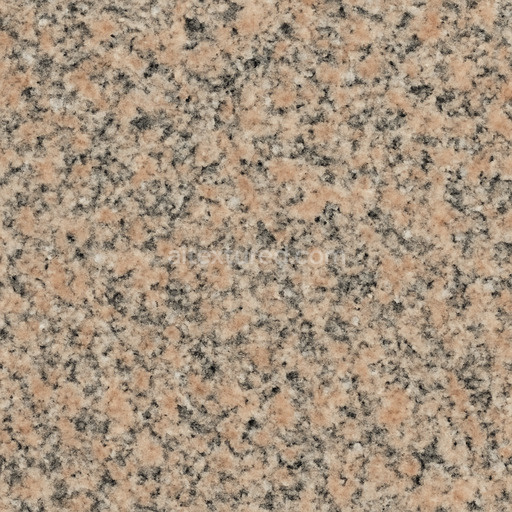Discover the photorealistic granite seamless texture designed to replicate the intricate composition of natural granite rock. This high-resolution texture captures the mineral-rich base substrate composed primarily of quartz, feldspar, and mica, bound together in a dense, crystalline matrix. The subtle grain orientations and fine aggregates are rendered with exceptional clarity, revealing varied porosity and weathering effects that define granite’s characteristic rugged yet refined surface. The polished finish of the texture highlights gentle color variations from deep grays to warm earth tones, enhanced by natural oxide layers that subtly influence the color balance and surface reflectivity. These elements combine to create a visually compelling surface ideal for architectural visualization, environment art, and concept prototyping.
In terms of physically based rendering (PBR) channels, this tileable photorealistic granite seamless texture excels by providing a richly detailed BaseColor (Albedo) map that faithfully reproduces the natural pigments and mineral patterns without artificial tinting. The Normal map captures micro-relief and structural consistency, emphasizing the grain boundaries and surface irregularities essential for realistic light interaction. Roughness values are balanced to reflect the semi-polished granite surface, neither too glossy nor overly matte, while the Metallic channel remains minimal, consistent with granite’s non-metallic nature. Ambient Occlusion enhances depth perception around crevices and grain clusters, and the Height/Displacement map supports subtle parallax effects or geometry displacement for enhanced realism in real-time 3D applications.
Optimized for modern pipelines, this seamless photorealistic granite texture supports resolutions up to 8K, ensuring exceptional detail even on large UV islands without visible tiling artifacts. The texture files are fully compatible with Blender, Unity, and Unreal Engine, requiring minimal setup to integrate into your projects. For practical use, it is recommended to adjust the UV scale carefully to maintain natural grain proportions and consider fine-tuning roughness values to match specific lighting conditions or desired surface wear. Combining this texture with a subtle ambient occlusion pass and a light normal map overlay can further break up uniformity without oversharpening, resulting in a convincing, production-ready material that elevates any rock texture application or 3D preview.
The ai texture photorealistic granite seamless texture offers a highly detailed and consistent rock texture composition, ensuring a seamless photorealistic granite seamless texture ideal for realistic PBR material applications.
How to Use These Seamless PBR Textures in Blender
This guide shows how to connect a full PBR texture set to Principled BSDF in Blender (Cycles or Eevee). Works with any of our seamless textures free download, including PBR PNG materials for Blender / Unreal / Unity.
What’s inside the download
*_albedo.png — Base Color (sRGB)*_normal.png — Normal map (Non-Color)*_roughness.png — Roughness (Non-Color)*_metallic.png — Metallic (Non-Color)*_ao.png — Ambient Occlusion (Non-Color)*_height.png — Height / Displacement (Non-Color)*_ORM.png — Packed map (R=AO, G=Roughness, B=Metallic, Non-Color)

Quick start (Node Wrangler, 30 seconds)
- Enable the addon: Edit → Preferences → Add-ons → Node Wrangler.
- Create a material and select the Principled BSDF node.
- Press Ctrl + Shift + T and select the maps
albedo, normal, roughness, metallic (skip height and ORM for now) → Open.
The addon wires Base Color, Normal (with a Normal Map node), Roughness, and Metallic automatically.
- Add AO and Height using the “Manual wiring” steps below (5 and 6).
Manual wiring (full control)
- Create a material (Material Properties → New) and open the Shader Editor.
- Add an Image Texture node for each map. Set Color Space:
- Albedo → sRGB
- AO, Roughness, Metallic, Normal, Height, ORM → Non-Color
- Connect to Principled BSDF:
albedo → Base Colorroughness → Roughnessmetallic → Metallic (for wood this often stays near 0)normal → Normal Map node (Type: Tangent Space) → Normal of Principled.
If details look “inverted”, enable Invert Y on the Normal Map node.
- Ambient Occlusion (AO):
- Add a MixRGB (or Mix Color) node in mode Multiply.
- Input A =
albedo, Input B = ao, Factor = 1.0.
- Output of Mix → Base Color of Principled (replaces the direct albedo connection).
- Height / Displacement:
Cycles — true displacement
- Material Properties → Settings → Displacement: Displacement and Bump.
- Add a Displacement node: connect
height → Height, set Midlevel = 0.5, Scale = 0.02–0.08 (tune to taste).
- Output of Displacement → Material Output → Displacement.
- Add geometry density (e.g., Subdivision Surface) so displacement has polygons to work with.
Eevee (or lightweight Cycles) — bump only
- Add a Bump node:
height → Height.
- Set Strength = 0.2–0.5, Distance = 0.05–0.1, and connect Normal output to Principled’s Normal.
Using the packed ORM texture (optional)
Instead of separate AO/Roughness/Metallic maps you can use the single *_ORM.png:
- Add one Image Texture (Non-Color) → Separate RGB (or Separate Color).
- R (red) → AO (use it in the Multiply node with albedo as above).
- G (green) → Roughness of Principled.
- B (blue) → Metallic of Principled.
UVs & seamless tiling
- These textures are seamless. If your mesh has no UVs, go to UV Editing → Smart UV Project.
- For scale/repeat, add Texture Coordinate (UV) → Mapping and plug it into all texture nodes.
Increase Mapping → Scale (e.g., 2/2/2) to tile more densely.
Recommended starter values
- Normal Map Strength: 0.5–1.0
- Bump Strength: ~0.3
- Displacement Scale (Cycles): ~0.03
Common pitfalls
- Wrong Color Space (normals/roughness/etc. must be Non-Color).
- “Inverted” details → enable Invert Y on the Normal Map node.
- Over-strong relief → lower Displacement Scale or Bump Strength.
Example: Download Wood Textures and instantly apply parquet or rustic planks inside Blender for architectural visualization.
To add the downloaded texture, go to Add — Texture — Image Texture.

Add a node and click the Open button.

Select the required texture on your hard drive and connect Color to Base Color.


